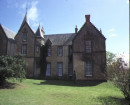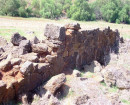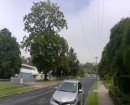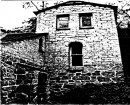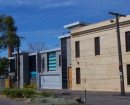FORMER FEDERAL WOOLLEN MILLS
13 MACKEY STREET NORTH GEELONG, GREATER GEELONG CITY
-
Add to tour
You must log in to do that.
-
Share
-
Shortlist place
You must log in to do that.
- Download report
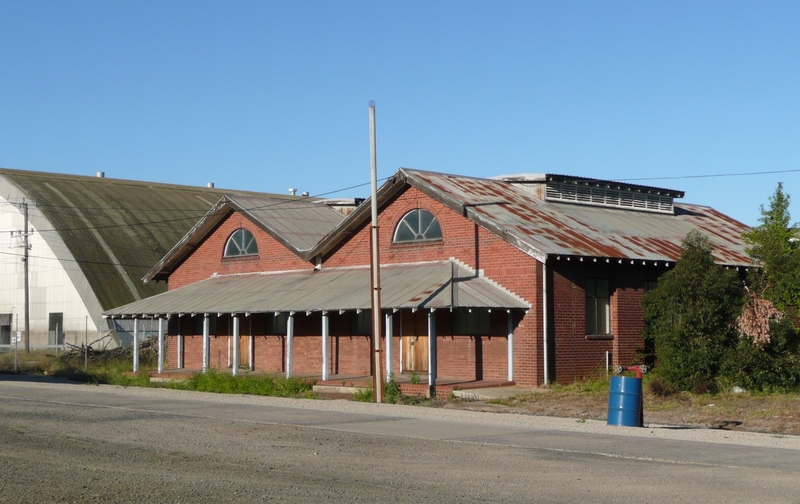


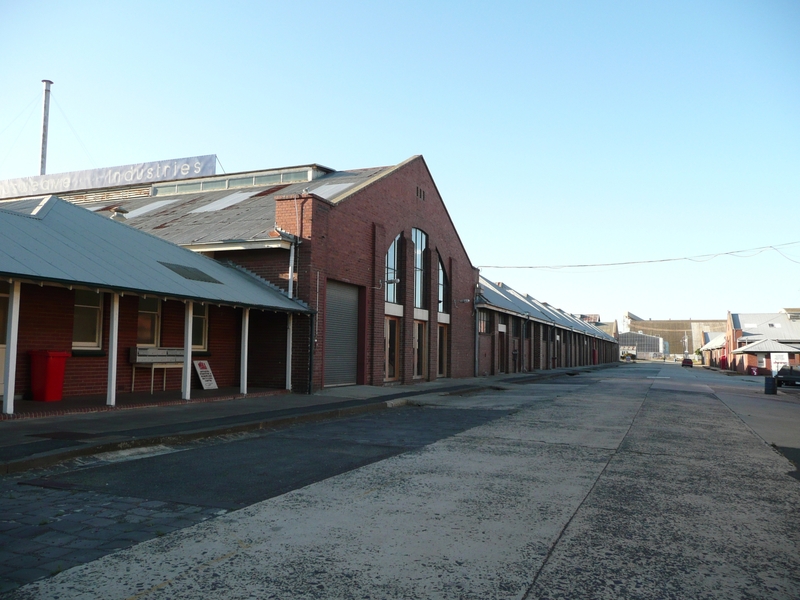
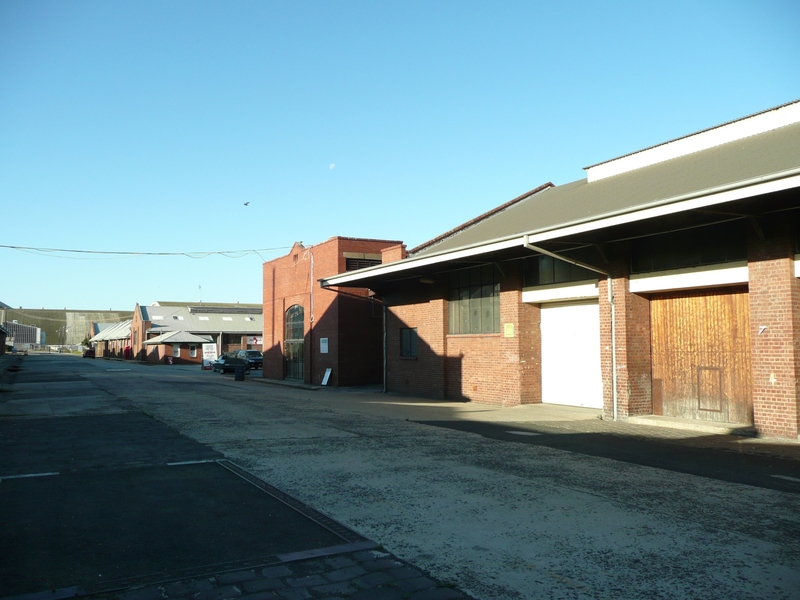


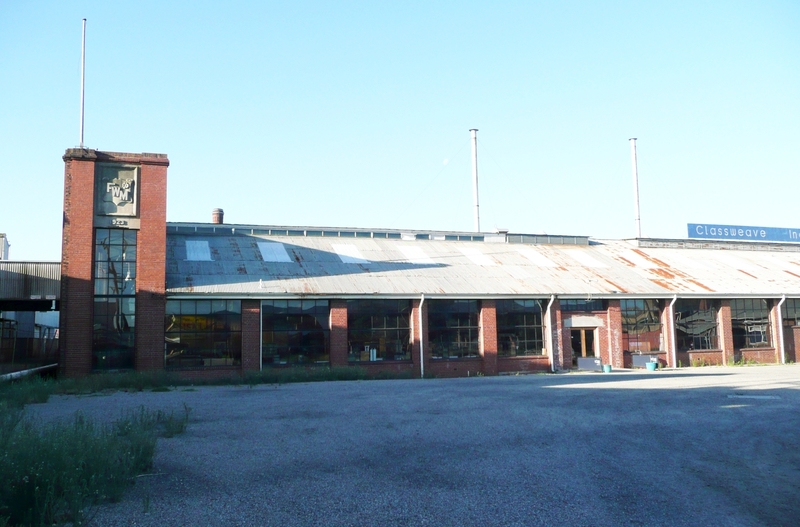


Statement of Significance
The former Federal Woollen Mills is of historical, social, and scientific (technological) significance to the State of Victoria.
The former Federal Woollen Mills is historically important as a key component in the system of factories set up by the Commonwealth in an attempt to make Australia self-sufficient in defence production in the years leading up to the First World War. Of those original factories, this former woollen mills is the most intact in terms of its building stock and original design layout. It is historically and socially significant for its associations with the socialistic ideas of Australia's first Labor government (which built and operated the mill) in the provision of union preference, above award wages, light, air and employee welfare arrangements.
The former Federal Woollen Mills is architecturally significant for the quality of its factory design and its integrity. Buildings with strong design qualities were not typical to factories, yet are well represented at the former Federal Woollen Mills. The original fabric remains largely intact, despite the loss of plant and the addition of some modern envelope, and is unusual in this respect. It is also an important work of Commonwealth architect John Smith Murdoch whose most notable work was Old Parliament House in Canberra. The place is architecturally and scientifically important for its excellence in technology and layout, notably the influential introduction of the shed principle of factory planning and the use of steam turbines and electric motors for machine driving.
-
-
FORMER FEDERAL WOOLLEN MILLS - History
** from Conservation Management Plan by Bryce Raworth 2001
The mill opening
Tuesday 21 December 1915 was an ideal day for the 250 guests of the Federal Government journeying down to North Geelong by special train. They were going to celebrate the official opening of the Commonwealth Government Woollen Cloth Factory by His Excellency the Governor General of Australia, Sir Ronald Monroe-Ferguson.
It was the biggest and most prestigious mill opening in the history of the industry. The Governor General, the Prime Minister and the Minister for Defence headed a dignitaries list which included fourteen local and interstate MPs, eleven Senators, the Attorney General, the Commonwealth Statistician, and the heads of the Office of Home Affairs and the Commonwealth Bank. At the mill, waiting with Mr Smail the new mill’s manager, Geelong’s finest were assembled: the Mayors of Geelong, Newtown and Chilwell, and Geelong West, the owners and managers of Geelong’s three private woollen mills, the Australian Woollen Manufactures Association, the Presidents and Secretaries of the Geelong Trades Hall Council and the Textile Workers Union, the Harbour Commissioner, the Chair of Gordon Technical College and many others.
When the giant Yarra Falls mill opened in Abbotsford in 1919, the celebrations were far more discreet, the VIP guest list being confined to the acting Prime Minister, the Minister for Public Works, the Leader of the Opposition and the Mayor of Collingwood.
At the Commonwealth opening, the train with the Governor General's own carriage attached arrived at the station at 11 am and was met by a fleet of motor cars which whisked the 250 guests to the mills half a mile away. A guard of honour from the Ballarat Military Camp welcomed the Governor, while the national anthem was played by the joint bands of the Camp and St Augustines. A full inspection of the new mill followed, with the foremen of each department on hand to explain the working of the huge machines they controlled. The key to wool room was handed to the Governor who inserted it in the lock and declared the place open. At the request of Senator Pearce the Minister for Defence, His Excellency also started the motor and set the machinery going in the wool scour (Geelong Advertiser 21.12.1915.)
The luncheon that followed in the carpeted and bunting draped finished goods room was said by the Geelong Times to be the superior of any previously given in the provinces. The Prime Minister Mr Hughes was in the chair and he submitted the toast of "His Majesty the King" before introducing the guest of honour and the chief toast: "Success to the factory." (Geelong Times 21.12.1915)
Speaking through a cloud of cigarette smoke fired up in front of him by Prime Minister Hughes and blissfully unaware of the shock awaiting him after lunch in the form of a trick book which exploded with a bang when he opened it, (handed to him by a member of the Trades Hall Council), the elegantly suited Governor General addressed the replete guests.
He said he had seldom seen buildings better designed for the object they served, or better quality products. All the comfort, softness and durability of the best Northern English manufacture appeared to be equalled here. The equipment of the Australian forces was beyond all praise, as they knew from the highest Imperial sources. In the new government munitions factories, which had been controversial, they now had a most perfect form of production. He had not seen better conditions for the workers, better conducted mills or better results than in the governments factories where hundred of women had been doing splendid service throughout the war. The mill new institution typified this direction and he was proud to be associated with it. (Geelong Advertiser 21.12.1995)
Out of this address and the many other speeches reported on this great day, four themes emerged again and again. Patriotism and empire loyalty, the notion of socialistic manufacturing, technical excellence and working conditions and industrial relations were the main talking points of many of the speakers. They are also the foundations of this assessment of the historical, social and architectural significance of the Commonwealth Mill buildings and site.
Patriotism And Empire Loyalty
The Governor General had put a period to his address by announcing he had received a telegram that day from the Secretary of State advising that all troops had been transferred without loss of men or material from Suvla Bay and Anzac. The news would, he said, be welcomed by the public and would strengthen the country’s resolve to direct every effort towards victory for the British Empire.
He was not mistaken in his audience. Australia was a proud new national member of the greatest Empire on earth. When war was declared in August 1914, Labour PM Andrew Fisher had promised to defend Britain "to the last man and the last shilling" and Australia had not stinted in its keeping its promise. Its force of citizen soldiers was being called the best in the world. Supplying that force with the best equipment and arms was not only a civic duty, but a matter of personal pride to many workers. Geelong MP Mr A T Ozanne, speaking later, reflected this pride, claiming that "The men and women working in the mill did not look on the work simply as employment, but found joy in producing the best possible material, because they had sons or brothers at the front helping to win this great struggle in order to keep the heel of Germany from trampling on this great Australia." (Age 25.12.1915)
The Commonwealth Woollen Mill was the last and the most ambitious of the defence plants established between 1910 and 1915, the culmination of thirty years halting progress towards self - sufficiency for Australian defence. The NSW Royal Commission on Defence had first advocated the building of an ammunition plant in 1881, but it was Victoria which had seized the initiative and built the Footscray Ammunition Factory in 1889 and refurbished the small Deer Park Explosives Factory soon after. The Australian Defence Department was formed around the nucleus of the existing Victorian department in Melbourne. Assisted by Imperial defence experts, it began the work intended to free Australia from its near total dependence on British military troops and supplies.
Preliminary enquiries as to the cost of setting up a rifle factory were made in London in 1906, and the following year the government sent off two experts on a world tour of small arms and cordite factories. Later in 1907 Prime Minister Deakin returned from the Imperial Conference to announce his government’s acceptance of compulsory military training for the new national defence force, a policy embodied in the 1910 Defence Act. Speeded along by Fisher’s Labor government and by Senator George Pearce, Minister for Defence in 1908/9, 1910/13 and 1914/21, sites for the necessary armaments factories were quickly selected.
Opposition to the compulsory aspects of the new defence policy was strong, so the Fisher government decided to invite Britain’s greatest hero, Lord Kitchener, to visit Australia and report on its defences. The newspapers avidly followed the great man's tour of the country between January and April 1910 and great coverage was given to his report. He recommended that Australia follow British and Indian example and establish both compulsory military service and government run factories to equip the troops.
Armed with the report, the government introduced compulsory military training forthwith. It then established a harness and saddlery factory at Clifton Hill (operative September 1911), a clothing factory in South Melbourne (June 1912), a cordite factory at Maribyrnong (June 1912), a small arms factory at Lithgow (June 1912) and finally, the woollen cloth mill at Geelong in December 1915. It was an enormous undertaking for a country ten years old, and a remarkable achievement when successfully completed.
Socialistic Manufacturing
The Governor General had said in his speech that the new munitions factories had been controversial and so they were. Reporting the opening for the Age under the banner "Socialistic Khaki," AJ Hamson, MP for Bendigo, soap manufacturer and ANA member, reminded his readers that the 1911 Labor Government had made the decision to establish a national mill in order both to eliminate private profit for the supply of material for citizen soldiers and to get the best quality of material available. He agreed that this incursion of government into the realm of private enterprise was being watched by many with keen interest, but he was confident that this phase of the socialistic venture would not degrade but elevate. (Geelong Times op cit.)
Controversy over the factories was inevitable, given the novelty of their ownership and the competitive nature of the harness, boot and cloth factories. Unions and the Labor government were generally favourable, nationalisation of monopolies and the creation of a citizen defence force being planks in the Labor platform, but Liberals feared the tide towards political labour and the effects of recent decision such as 1907’s basic wage decision and 1908’s invalid and old age pensions. Perhaps foreshadowing the 1912 creation of the Commonwealth Bank, Senator Pearce told his audience at the opening of the government harness factory that they would see a great extension of the functions of the state in ventures similar to the factory. (Argus 14.9.1911) Liberals were deeply worried by such statements, and even during the early war years when the factories were at peak production and efficiency, members like Joseph Cook could say of them: "the less we have to do with the cultivation of social experiments in these war days, when the fate of the empire is at stake, the better it will be for all concerned." (Parliamentary Debates LXXVII, p 4100)
The public’s view was simpler. People were fascinated by the factories and flocked to view them. In the first year of its operation over 800 tourists arrived at the isolated small arms factory, to the dismay of its harassed manager. On one dreadful day 140 visitors crowded in to watch 150 employees turning out the first Australian made rifles. (Report on the Small Arms Factory, 1912. Commonwealth of Australia, Melbourne 1913) In part this was to do with fascination about the technology and the working conditions fostered by continuous newspaper reporting, but it was kept topical by the concerted opposition emanating from hostile manufacturers in the clothing, harness and wool textiles industries.
Government had deliberately endowed the defence factories with social as well as military and economic considerations. Deakin and those members on both sides of the house who launched New Protectionism and applauded the Higgins decision in the Harvester Basic Wage Case saw the factories as ideal vehicles to carry forward the government’s new found interest in controlling wages and working conditions.
By the mere fact of their creation, the new state owned factories in textiles, clothing and footwear had split the existing industries into public and private sectors. While the woollen mill was not permitted to sell to the public, it was now in direct competition with established manufacturers for state and national tenders. Because of its superior wages and working conditions, flow on from the government factory awards also posed a threat to manufactures' established production costings. Because it was a closed shop with union preference as its employment policy, the mill, like all the factories, was perceived by management interests to be a source of dangerous ideological influence.
Indeed, manufacturers had good reason to worry.
Essential manufacturing skills were in chronic short supply in Australia well into the 1920’s and British trained textile hands and weavers were in great demand. Mill manager John Smail was British trained as were many of his foremen and recruiting skilled staff in the UK was an traditional, if expensive option. In 1912, the Australian Woollen Manufacturer’s Association (AWMA) instructed its secretary to write to the Minister for Defence for an undertaking that Commonwealth Mill hands would be imported from the UK not recruited locally. They were not pleased with his reply that competent Australian workers would in fact be given first preference at the mill, nor reassured by his hopes that the recruiting would not inconvenience local mills. (AWMA Minutes, meeting of 22.10.1912. Department of Defence Woollen Cloth Factory, first annual report of the Manager, 14.2.1917. Dept Defence 1917)
The older, private mills that constituted the AWMA were implacable opponents of the Commonwealth Mill, and remained so until it passed into private hands. In retaliation for the announcement of the government's intention to set up the Commonwealth Mills, the private mills had boycotted the 1909 tenders to equip the 20,000 strong Australian Expeditionary force. For a time it appeared that the Defence Department might have to import its requirements, but the Vicars mill in NSW seized the opportunity and tendered successfully, filling the biggest order ever let in the industry over the next three years. (John Vicars and Co Ltd Vicars, the first hundred years in Australia 1873- 1973. P 14) To add insult to injury, after 1915 when all mill output was commandeered by defence tender work, private mills were forced to sign clause 31 (a) of the tender documents which authorised the entry of trade union reps into the workplace without a foreman being present. Despite their strong objections, owners were forced to sign and were prosecuted when they tried to avoid their undertakings.(AWMA Minutes 16.2.1915)
Technical Excellence
The Commonwealth’s new mill was a twelve set woollen spinning and weaving mill located on 14 and a half acres in North Geelong, close to the Harbour Trust’s abattoirs and freezing works. It was probably designed by John Smith Murdoch, the first Commonwealth Government Architect between 1904 and 1929. The factory had 10 sets of woollen carding machines, two worsted sets and 72 state of the art automatic self-shuttling looms. It had an ultra modern 500kw Thomas - Houston steam turbine generator plant, the first of its kind in Australia, powered by three Babcock & Wilcox boilers. These were connected to town water, which was held in a futuristic concrete tower and reused over and over. It was fully sewered for all types of waste disposal and was equipped with fire hoses, hydrants and chemical extinguishers. Like the other Geelong mills, it had access to the city's trained pool of labour and to the network of stores, highways, railways and docks through which raw wool, coal, machinery, spare parts, dyestuffs and finished goods all moved. (See Worrall, A "All Wool and a Yard Wide" PhD Melbourne 1987 p226- 233)
The new mill was a radically different shape from its competitors in Geelong and Ballarat. Most of these old mills had been built in the 1870s and typically they were three and four storey shoeboxes with stone foundations and floors, brick walls, and bays of saw toothed roofing tiled with slate. Forty three years later, Commonwealth was also built of local brick but it had concrete foundations for its ground level buildings and its designers used lightweight galvanised iron in roof and walls and reinforced concrete in chimney stack, walls and floors to an unprecedented extent.
Visitors to the mill were much taken with the good ventilation and light of its sheds. Like all mills, the spinning and weaving areas were brilliantly lit from above through south facing clerestories, but at the Commonwealth mill, windows were also set into the side of the sheds above eye height and they were the biggest ever seen in the industry. In this innovation they must be regarded as the model for subsequent mill window design in the Yarra Falls (1917), Port Phillip, Foy and Gibsons and Lincoln mills (1919) as well as the Stawell mills (1920).
Most remarkable of all was the mill’s novel layout. As anyone could see, Smail's new mill was a radically different shape to its predecessors. It was built as a collection of single storey brick and iron sheds bisected by a roadway. Office first on the left inside the impressive gates, generator room and boiler house at the end on the same side. Work flowed from the wool store on the right hand side of the entrance way through scouring, dyeing, carding, spinning and weaving, then over the road to finishing, mending and warehousing heading back towards the office. In old style multi-story mills, work flowed from the top of the building down through gravity feed to finished goods at the bottom, a layout dangerous to employees because of the lifting, hoisting and vertical falls involved. Commonwealth‘s ground floor plan was safer by far than its predecessors.
Electric power was the key to the new shape of the mill. The first Victorian mill introduced small scale electric power in 1907, but in 1914/15 only the Commonwealth Mills was fully electric and as late as 1920 57% of the state’s mills were still steam powered. With electricity, power to machines could now be supplied from individual 1 to 50 hp electric motors in each shed running smaller drives direct to each set of machinery. Now sheds could be built free standing and compact, housing several motors running parallel lines of shorter shafting, instead on one long power train. Now sections of the operation could be shut down separately for repairs when required, doing away with the dangerous practice of sending a boy up a ladder to replace a takeoff belt with the mill power train still running. The flexibility of electric power was in fact an important contributor to the lowering of the high level of accidents in mills between 1913 and 1927.(Worrall op cit)
The shed principle quickly became the norm for new mills in Victoria. The architects of Lincoln Mills in Coburg (1918) and the Stawell Mills both adopted the single storey and the separated shed floor plan for work areas, and a both used a centralised power house as the focus of the mill, thought this was laid out in a horseshoe shape instead of on Commonwealth’s parallel plan.
The quality and price of Commonwealth's output reflected this innovation and excellence. In both it was recognised as being second to none. In 1917/18 a Royal Commission into the affairs of the government factories found that the mills were more efficient and their product superior in many respects to commercial offerings, especially in fabric quality and finish. The pure wool civilian suitings being made for returning soldiers were being made at prices previously paid for imported British shoddy, a most satisfactory outcome, said the Commissioners. ( Jensen, J: "Defence Production in Australia" draft p250 MP 421/2 f474-14-68)
Working Conditions And Industrial Relations
Responding to the Governor's speech on that auspicious opening day, Mr John Vicars, who owned the Marrickville Woollen Mills in New South Wales and who had been the chief defence contractor since 1904, rose to complement the project. He admitted that when the mill had first been suggested the private manufactures had opposed the idea, but he now wished the enterprise every success. "Mr Smail was the best man the government could have selected, and he had been wise in the selection of his staff. In fact he had picked the eyes out of the various mills of the Commonwealth, and they could depend upon it that he did not take the worst men."(Geelong Times ibid) Of the mills themselves, Mr Vicars did not think he had seen in any individual works of this size "a more completely built works or machinery of a finer nature than was to be found here. If one might be critical, he might say the mills were over elaborately built...Had it been a private enterprise, run on the strict commercial side, they might have done with something less elaborate."
Mr A T Ozanne MP did not believe the mills were over elaborate at all. He had said at the opening ceremony that the men and women working in the mill found joy in their work and he had noted further that another reason for these high spirits was that employees.."also realised that the building was practically a palace compared with other mills." (Geelong Times ibid)
In the provision of safe, comfortable working conditions, in its relaxed attitude to union membership and in its lavish provision of employees welfare schemes, Commonwealth and its privately owned incarnation as Federal Woollen Mills was an industry leader, with a local reputation as a very good place to work.
The employees had their own special building in the "palace", an employee’s dining room included as part of the original design of the mills. This was an airy building set about with verandahs and a garden, and discreetly divided within into men’s and women’s sections. Judging from the 1912 blueprints the dining room was part of the original concept, but it does not appear to have been built until 1927 when an employee's library was added to the kitchen and dining areas.
Most of the 256 people employed at the height of the war in 1918 were union members, mostly of the Textile Workers Federation, and the mills founding principle of union preference carried over into unusually good industrial relations thereafter when it became private concern in 1923. This harmonious record stood in sharp contrast to the stormy industrial relations that characterised dealings in the older private mills, Collins Brothers especially. At Commonwealth it was a cooperative arrangement, with J K Jensen, the long serving bureaucrat at the head of the government factories noting that it was "to the credit of the (Textile) Federation that its executive strove hard at all times to promote the successful opinion of the Mills. They were conciliatory in their approaches and refused to take up a case without first investigating its merits." (Jensen, p252)
Like many Geelong mills in the 1920’s, Federal actively supported the YWCA Blue Triangle Club’s sporting, educational and cultural work with mill girls. In 1921 it put up a basketball court on the grounds, and over the years added two tennis courts and a soccer field. For the longer serving married men, the mill Finance Committee sought a different means of "inspiring the will to work and reducing the turnover of skilled men." (Federal Mills Finance Committee "Welfare Schemes" 1927 Classweave Archives) They already had an annual bonus scheme which was paying out £3500 a year to selected employees but in 1927 the committee replaced this with a share holding scheme which allowed employees to buy shares from a deposit trust administered on their behalf by the company. Other mills also had these schemes, but for foremen only. At Federal anyone could apply and 230 rank and file employees rushed the scheme when it was offered, with over half the mills day hands buying a share.
Like all mills, Federal had an annual Mill Picnic, a gala summer holiday with sports and music and picnicking and prize giving. But of all the mills only Federal seems to ever have produced a mill song. The 1929 picnic competition for a song produced this effort from Mr H Baddeley, to be sung to the tune of the British Grenadiers. (From "The Federal Story" p8, typescript, nd, Classweave Archives)
Fair Mill, thou pride of North Geelong
Where many earn their bread
If spoken of both night and day
Enough could not be said.
It’s here they bring Australian wool
While still compact in bales
And out of it fine tweeds are made
For which are ready sales.
At half past seven the hooter sounds
For workers to begin
and then is heard the rush of wheels
Which make a mighty din.
We toil through the livelong day
To card and wind and weave
For through each process wool must go
Before allowed to leave.
We are a most contented lot
Conditions are so fair
and we by many envied are
Such mills are very rare.
Our picnic, bonus, yearly leave
Give great encouragement
So with a will to work we’ll go
and help the management.
Post War And Privatisation
In 1917 the Department of Defence stopped ordering on the mill because of a glut in khaki stocks and, in December 1918, it ordered an end to all national defence work. The factory switched to filling orders for uniforms from the Post Office and various state government departments, and in providing civilian suitings for returning soldiers. Australia was a uniform wearing culture, with tramways, railways, fire brigades, prisons, schools, police, nurses, cadets, youth organisations, bands and many others requiring outfits, so the market was a good one and demand high. By 1921, 75 % of the mill's output was going to non-Commonwealth customers. There had been big contracts to provide suits for returned servicemen, and the Returned Soldiers and Sailors Imperial League had requested 480,000 yards of tweed for on sale to its members at 50% of current market value.
The post war market was booming and the mill was very profitable but its owner, the Hughes government, now found it surplus to military requirements. Over the vocal protests of the Federal Labor opposition, advertisements for the sale of the Commonwealth Mills went out. When the tenders closed, the top bid of £130,000 was found to have come from the Woollen Manufactures Association of Australia. The tender was rejected as too low and readvertised. The WMAA added another £500 to its bid but eventually lost out to less hostile interests. In the opinion of one mill source, the industry bid was solely intended to obtain and close down the mill, which would have settled a great many old scores with the upstart establishment.
But the mill was too good to close. In 1923 it was sold as a going concern to a consortium of businessmen, headed by James Dyer, a Flinders Lane merchant, Julius Solomon, a Geelong draper and Senator James Guthrie, the flamboyant, one legged Corriedale fancier who was then general manager of Dalgety's Geelong. With the change of ownership, the mill was extended and its name changed to Federal Mills. The enterprise continued to prosper with no great shift in its fortunes until the 1970s. It survived the world 1924/5 textile slump and the 1930/ 31 depression, sailed through the Second World War doing what it did best and did not record its first annual loss until 1962 after the lifting of import restrictions in 1961 and the ensuing credit squeeze.
Chronology mill events, 1900-1968 (Unless noted otherwise, this chronology is drawn from company Annual Reports, Classweave Archives papers, Department of Defence papers and the A Worrall files on Commonwealth and Federal Mills.)
1910 Defence Act brings in compulsory military training for 12 to 25 yo males.
1911 Commonwealth Woollen Cloth Mill planning underway.
1912 James M Smail appointed Manager. Plant purchased in UK.
1913 Liberal government of James Hume Cook returned.
1914 August, war declared. Fisher returned in September.
1915 August, first foremen recruited furnaces tested, wool purchased. September six foremen appointed, 20 hands employed, mill begins operations. 1916/17 second steam turbine installed. Employing 210 in 1916, rising to 245 in 1917. 4000 shares in British Dyes purchased to ensure supplies.
1917 mill making overcoatings, waterproof overcoatings, khaki woollens, serge drab, bedford cord, whipcords, blue serges, hand loom weaving yarns.
1917/18 employing 256 including 13 returned soldiers. Making blankets and rugs for state and federal tenders.
1918/19 most profitable year to date. Employing 266. Making yarn for the returned soldiers weaving school.
1919/20 boom conditions. James Robertson appointed Manager. Looms stop for four weeks in June as coal shortages occur during engine drivers and firemen's strike.
1920 mill employing 316 including 152 females. New line in "defence tweed" for returned soldiers issue. Yarn supplied to Anzac Tweed. Trust hand weavers.
1921 mill basketball courts established.
1921/26 YWCA establishes and operates the Blue Triangle Community Committee for mill girls. repays total capital invested in it. Hughes government decides to sell mill.
1923 Commonwealth sells mill to a syndicate of Geelong businessmen for £239,000 . Name change to Federal woollen Mills Pty Ltd. J Dyer Chairman, J Solomon, director, Senator Guthrie, director.
1924 £7000 of new plant installed in January. Mill output rises 40% on preceding year. 38 new looms plus UK weavers imported.
1925 new looms installed and worsted plant extended. Shortages of weavers reported, some imported from the UK. 8% dividend declared, bonus to employees.
1926 more looms ordered, more weavers imported. 10% dividend declared. Robinson given a car in recognition of his services.
1927 new buildings erected at a cost of £49,854 to house new plant, including boiler. 12% dividend declared. (Employees dining room built?- or additions considered?)
1928 board room built. Employees welfare schemes introduced including, shareholding, deposit schemes, new library. 15% dividend declared.
1929 water softening plant installed. July to October slowdown, then recovery. 10% dividend.
1930 sedimentation plant installed, second hand woollen carding and spinning plant purchased, new building put up to house these at a cost of £3200. Power house converted from coal to oil. Dividend of 9%, salary reduction of 10% all staff plus employees earning above the basic wage. Start of depression.
1931 20% salary reductions, cancellation of annual mill picnic.
1932 final payment of purchase price to government.
1933 new effluent treatment plant, sprinkler system, additions to finishing and worsted departments.
1935/6 company restructures as public company, Federal Woollen Mills Ltd. Directors James Robertson, Duncan McLennan, Sydney Price, JP Baxter, Wm Stawell. Company reverts to coal for power and steam. Development of worsted business.
1937 installation of fuel economiser, new worsted plant. James Robertson dies.
1938 first operatives strike in company history. New plant.
1940/42 Defence Department production in full swing. Overtime and start of highest ever turnover records. High maintenance requirements.
1943 expansion of wool storage capacity. Employing 875.
1946 AIF Victory Contingent dressed in Federal uniforms.
1947/47 shortages of labour and materials, machinery parts, coal.
1948 introduction of 40 hour week.
1949 maintenance of plant and buildings brought up to date. Removal of the wool subsidy.
1950/51 shortages of skilled staff, rising wage and wool bills.
1952 difficult year due to rising import levels, some retrenchments.
1954 easing of import restrictions, development of fashion trade.
1955 James Keddie appointed manager.
1956 Flinders Lane showrooms opened. £70,000 of new machinery installed for fancy woollens and fine weaves. Good profits recorded. Robert Hughes Chairman of Directors.
1957 Textile Award. Employees get long service leave.
1957/71 Federal Woollen Mills benefit fund still disbursing to members.
1959 more plant installed. Works Manager JR Falkinder.
1961 Eagley Mills Ltd purchased. Making blankets. Surplus plant sold.
1962, 1963 first losses recorded, more plant purchased. Import competition.
1964 another loss year. G Firth General Manager, extra design staff appointed, plant replaced in a major company reorganisation.
1967 mill diversifies into soft furnishings and upholstery.
1968 company taken over by Lederman Holding Pty Ltd. Employment 614, including 337 females. Mill trades as Classweave Federal Industries for several years. Expansions to house spinners, twisters, winders, dye vats, looms and finishing machinery. Shoek looms installed.
1974 federal government removes the industry's tariff protection, over 800 people were retrenched bringing the workforce from a peak of over 900 to approximately 90 employees.
1987 modern canteen constructed.
1988 first Eltex air texturising spindles installed.
1990 dyehouse refurbished.
1992 Shoek looms decommissioned.
1995 dyehouse closed.
1996 woollen spinning ceased, additional Brukner stenter installed.
John Smith Murdoch and his oeuvre
John Smith Murdoch was born in Scotland in 1865. He received his early architectural training in Edinburgh under Sir A Marshall McKenzie and later in London at the South Kensington School of Science and Art before emigrating to Australia in 1885.
On his arrival , Murdoch joined the Queensland Department of Mines and Works where he remained for two years before entering private practice. In 1894, Murdoch rejoined the public service becoming a draftsman in the Queensland Department of Public Works. Ten years later, he transferred to the Commonwealth public service as a senior clerk in the Public Works Branch of the Department of Home Affairs. His elevation to senior assistant to the Director-General, Percy T Owen, in 1909, signalled the beginning of a long involvement with public works in Canberra.
Murdoch first came to public attention as a member of the review board for the Design of a National Capital Competition, in 1912. The competition was eventually won by American architect, Walter Burley Griffin. Over the following years, a tension developed between the two architects with Griffin reportedly identifying Murdoch as being at the forefront of moves to alter the very substance of his design for the capital. Griffin had been appointed Federal Capital Director of Design and Construction in 1913 but was replaced by a committee in 1920. Murdoch had little enthusiasm for the whole concept of Canberra but was nonetheless responsible for many of its most important buildings. He was designer of the provisional Parliament House, the Power House (1911), the Hotel Canberra, the Actons Hotel and the Kurrajong and Gorman Houses. He was also involved in the formulation of residential plans the City. In 1925, he designed and supervised the construction of the first stage works for the remodelling of Government House in Canberra. In the following year, he was one of the adjudicators of the competitions for the design of Australian War Memorials for both Canberra and Villers-Bretoneaux in France.
Murdoch was later appointed the first Commonwealth Architect. In this role, he produced deigns for a number of important buildings outside of Canberra, including the General Post Office (1923) and Forest Place in Perth, the Spencer Street Post Office and the Commonwealth Offices in Treasury Place in Melbourne and Anzac Square in Brisbane. Murdoch was also involved in the construction of a number of military complexes including, RAAF Richmond (NSW), RMC Duntroon (ACT), Enoggera (Qld), HMAS Cerberus, RAAF bases at Point Cook and Laverton and the Maribyrnong Ordnance Factory (Vic) and HMAS Creswell (Jervis Bay). He was possibly responsible for the quarantine stations in Lytton (Qld) and Point Nepean (Vic).
Murdoch developed a range of design approaches which were variously employed in response to the budget and status of his individual projects. His larger and more important public buildings were executed in an austere, stripped Classical mode. The provisional Parliament House exemplifies this approach with freely interpreted classical details arranged in a symmetrical composition of brick and stucco. Outside of the major cities or where funding was less freely available, (such as at Point Cook or Laverton), Murdoch adopted a weatherboard and corrugated iron expression described by Span and Neale as 'Early Commonwealth Vernacular'. At industrial sites such as the Federal Mills Factory in Geelong, or the Maribyrnong Ordnance Factory, Murdoch designed mildly Classicised red brick facades to distinguish otherwise rudimentary production spaces. Other elements such as the long skillion ventilator dormers found at those sites recur in the design of other government industrial buildings such as the Canberra Power House and the Cotter River pumping station (c.1915).
Although frequently described as dour both in personal and architectural terms, John Smith Murdoch remains one of the most influential contributors to the style of Government buildings from 1910 until his retirement in 1929. His immense body of work, particularly those buildings associated with establishment of the nation's capital and those constructed in anticipation of WWI, record Murdoch's capacity for design within a broad range of styles and budgets and on scales ranging from modest, residential works to sprawling industrial complexes.FORMER FEDERAL WOOLLEN MILLS - Permit Exemptions
General Exemptions:General exemptions apply to all places and objects included in the Victorian Heritage Register (VHR). General exemptions have been designed to allow everyday activities, maintenance and changes to your property, which don’t harm its cultural heritage significance, to proceed without the need to obtain approvals under the Heritage Act 2017.Places of worship: In some circumstances, you can alter a place of worship to accommodate religious practices without a permit, but you must notify the Executive Director of Heritage Victoria before you start the works or activities at least 20 business days before the works or activities are to commence.Subdivision/consolidation: Permit exemptions exist for some subdivisions and consolidations. If the subdivision or consolidation is in accordance with a planning permit granted under Part 4 of the Planning and Environment Act 1987 and the application for the planning permit was referred to the Executive Director of Heritage Victoria as a determining referral authority, a permit is not required.Specific exemptions may also apply to your registered place or object. If applicable, these are listed below. Specific exemptions are tailored to the conservation and management needs of an individual registered place or object and set out works and activities that are exempt from the requirements of a permit. Specific exemptions prevail if they conflict with general exemptions. Find out more about heritage permit exemptions here.Specific Exemptions:General Conditions:
1. All exempted alterations are to be planned and carried out in a manner which prevents damage to the fabric of the registered place or object.
2. Should it become apparent during further inspection or the carrying out of alterations that original or previously hidden or inaccessible details of the place or object are revealed which relate to the significance of the place or object, then the exemption covering such alteration shall cease and the Executive Director shall be notified as soon as possible.
3. If there is a conservation policy and plan approved by the Executive Director, all works shall be in accordance with it.
4. Nothing in this declaration prevents the Executive Director from amending or rescinding all or any of the permit exemptions.
5. Nothing in this declaration exempts owners or their agents from the responsibility to seek relevant planning or building permits from the responsible authority where applicable.
* No permits are required for works which are in accordance with the Conservation Management Plan prepared by Bryce Raworth Pty Ltd 2001FORMER FEDERAL WOOLLEN MILLS - Permit Exemption Policy
The main significance of the place resides in its interwar buildings, particularly those built between 1915 and 1927, and in the fact that it has continued to funtion in the same fashion since its inception. The buildings which form part of its original layout have a degree of design integrity which should be protected, particularly in their external expression. Their internal modification to allow more efficient handling of materials and processes should be allowed. The original power house and chimney stack present particular problems which, because of the poor condition of the mortar in the chimney, will need a sensitive approach given the land mark qualities of the structure. The conservation management plan by Bryce Raworth gives good policies for dealing with most contingencies.
-
-
-
-
-
OSBORNE HOUSE
 Victorian Heritage Register H1101
Victorian Heritage Register H1101 -
OSBORNE HOUSE
 Victorian Heritage Inventory
Victorian Heritage Inventory -
CRESCO FERTILIZER PIER
 Victorian Heritage Inventory
Victorian Heritage Inventory
-
"1890"
 Yarra City
Yarra City -
"AMF Officers" Shed
 Moorabool Shire
Moorabool Shire -
"AQUA PROFONDA" SIGN, FITZROY POOL
 Victorian Heritage Register H1687
Victorian Heritage Register H1687
-
1 Brockenshire Street
 Yarra City
Yarra City -
1 Bundara Street
 Yarra City
Yarra City -
1 Forster Street
 Hobsons Bay City
Hobsons Bay City
-
-
Tours involving this place See all tours
13/09/16
Eastern Park & Geelong Botanic Gardens - Former Federal Woollen Mills - Former Customs House - Matthew Flinders School No.8022 - Geelong Railway Station - Lime Kiln Complex - Former Telegraph Station - Wintergarden - Eastern Cemetery Gatehouse - Kinnears Ropeworks - The Geelong Club - Sunnyside Wool Scour - Bay View Hotel
Public contributions
Tours involving this place See all tours
13/09/16
Eastern Park & Geelong Botanic Gardens - Former Federal Woollen Mills - Former Customs House - Matthew Flinders School No.8022 - Geelong Railway Station - Lime Kiln Complex - Former Telegraph Station - Wintergarden - Eastern Cemetery Gatehouse - Kinnears Ropeworks - The Geelong Club - Sunnyside Wool Scour - Bay View Hotel







